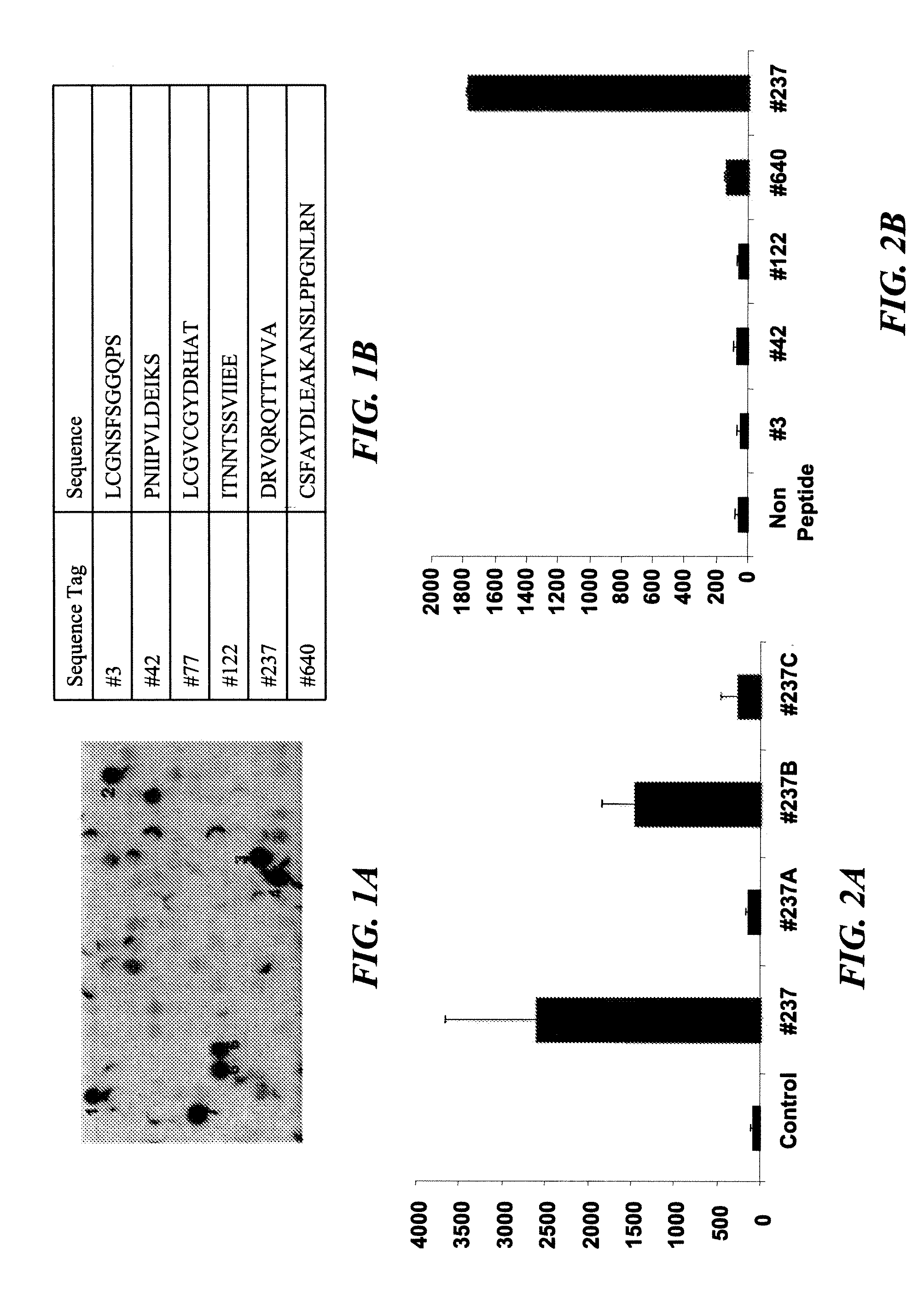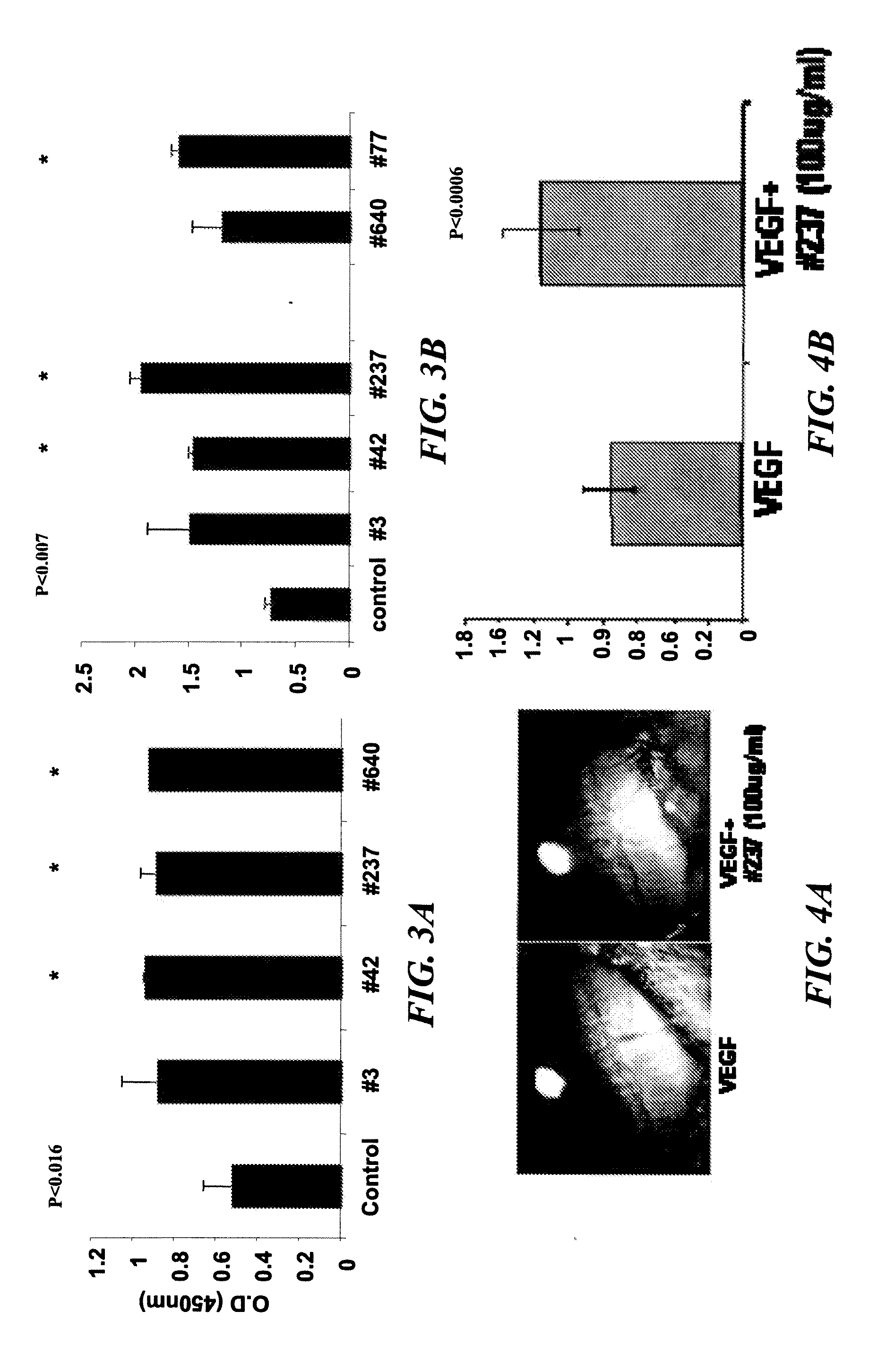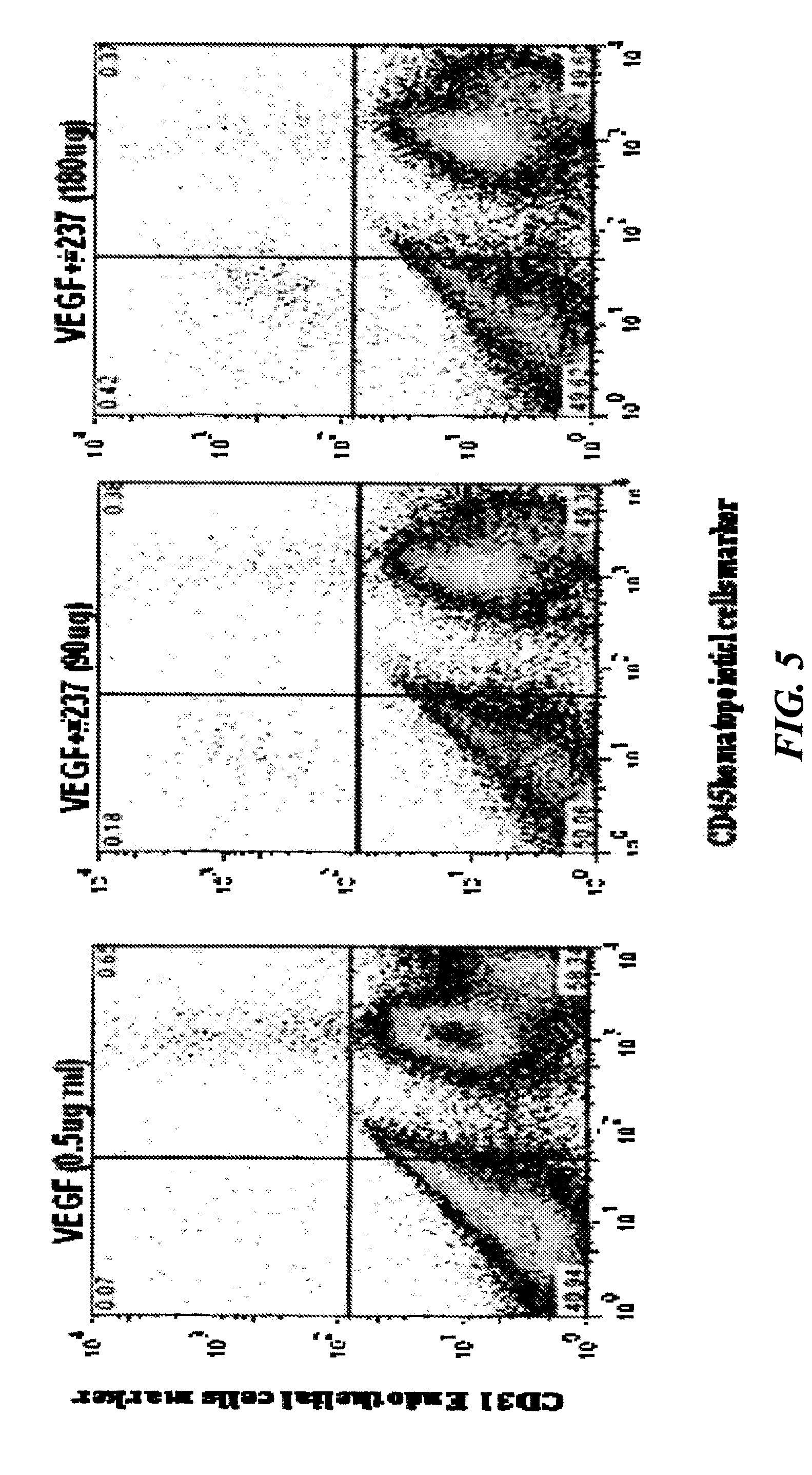Pro-angiogenic fragments of prominin-1 and uses thereof
a technology of prominin-1 and prominin, applied in the field of prominin-1 proangiogenic fragments, can solve problems such as pathological angiogenesis reduce or alleviate at least one adverse effect or symptom, increase collateral artery growth, and revascularization
- Summary
- Abstract
- Description
- Claims
- Application Information
AI Technical Summary
Benefits of technology
Problems solved by technology
Method used
Image
Examples
example 1
Seven 12-Mer Peptides Derived from Prominin-1 Sequence Bind VEGF
[0349]Minimum epitope assignment was based on immunostaining of ABIMED spot peptide arrays prepared at the MIT Biopolymers Facility (FIG. 1). Each spot comprised a 12-mer contiguous peptide, and depending on the number of residues in the antigen of interest, 3-residue offset was used to cover the entire antigen sequence. For 3-residue offset, spot 1 contains sequence 1-12, spot 2 contains sequence 3-15, spot 3 contains sequence 6-18, etc. The Cellulose-bound peptide membrane was preincubated with T-TBS blocking buffer (TBS, pH 8.0 / 0.05% Tween 20 in the presence of blocking reagent; Roche Diagnostics chemiluminescence detection kit 1500694). Subsequently, the peptide array was incubated with hVEGF at a final concentration of 1.0 μg / ml for 2 h in T-TBS blocking buffer. After washing three times for 10 min with T-TBS the anti-hVEGF antibody (Quantum Biotechnologies, Montreal), was added to a final concentration of 1 μg / ml ...
example 2
#Peptide 237 Derived from the Extracellular Domain of Prominin Increases VEGF Binding to Endothelial and B16-F10 Melanoma Cells
[0350]In order to characterize the effect of the peptides on VEGF binding to endothelial and melanoma cells, the cells were incubated with various peptides (720 μg / ml) in the presence of I125-VEGF (12 ng / ml) (FIG. 2). Peptide #237 increased VEGF binding to endothelial as well to melanoma cells. 10000 cells were incubated in binding buffer containing 20 mM Hepes, 0.1% BSA and I125-VEGF (12 ng / ml) for 3 h on ice. Following 3 washings, the radioactive levels were determined by gamma counter. An increase of more than 25 times in I125-VEGF binding was observed when peptide #237 was added to both kinds of cells. The other prominin-1 peptides examined had no effect on VEGF binding to endothelial cells.
example 3
Extracellular Fragments of Prominin-1 Affect Endothelial and Melanoma Cell Proliferation
[0351]Cell proliferation was assessed using an assay based on the cleavage of the tetrazolium salt WST-1 to formazan by cellular mitochondrial dehydrogenases. Aliquot of 50,000 micro-vessel endothelial cells (FIG. 3A) or F10-B16 melanoma cells (FIG. 3B) were added to each well of a 96-well plate in EGM medium containing 10% fetal bovine serum. After cells had attached to the 96-well tray, the cells were washed, and high serum medium was replaced with starvation medium overnight. All wells were rinsed with phosphate-buffered saline. Negative control wells received starvation medium, and positive control wells received full medium. The cells were treated with the different peptides (100 ug / ml) to determine their effect on cell proliferation. Cells were allowed to incubate for 24 h in the presence of the respective peptide. At this time, the WST-1 reagent, was applied for 4 h to measure cell prolife...
PUM
| Property | Measurement | Unit |
|---|---|---|
| Fraction | aaaaa | aaaaa |
| Pharmaceutically acceptable | aaaaa | aaaaa |
| Hydrophobicity | aaaaa | aaaaa |
Abstract
Description
Claims
Application Information
 Login to View More
Login to View More - R&D
- Intellectual Property
- Life Sciences
- Materials
- Tech Scout
- Unparalleled Data Quality
- Higher Quality Content
- 60% Fewer Hallucinations
Browse by: Latest US Patents, China's latest patents, Technical Efficacy Thesaurus, Application Domain, Technology Topic, Popular Technical Reports.
© 2025 PatSnap. All rights reserved.Legal|Privacy policy|Modern Slavery Act Transparency Statement|Sitemap|About US| Contact US: help@patsnap.com



